The Battery Detector/Gas Detector is a portable and reliable safety device designed to detect harmful gases and provide early warnings to prevent hazardous situations. Powered by batteries, it is ideal for use in areas where a power supply is unavailable or unreliable. The detector monitors the air for dangerous gases like carbon monoxide, methane, and other toxic fumes, offering protection in both residential and commercial environments.
The Battery Detector/Gas Detector is an essential safety tool designed to continuously monitor the presence of hazardous gases in indoor environments. Using advanced sensor technology, it can detect gases such as carbon monoxide (CO), methane (CH4), propane (C3H8), and other toxic substances. This battery-operated device ensures that buildings are protected from potentially life-threatening situations, even in the absence of a direct electrical connection.
Typically used in homes, industrial facilities, garages, and other high-risk areas, the Battery Detector/Gas Detector provides continuous monitoring of the air quality and alerts occupants with loud alarms when dangerous gas levels are detected. Its compact design makes it easy to install, and its battery-powered operation ensures it works independently of the electrical grid, offering greater flexibility and reliability.
- Type: Battery-powered Gas Detector
- Function: Detects hazardous gases such as carbon monoxide, methane, propane, and more
- Ideal for: Homes, industrial settings, garages, kitchens, and commercial buildings
- Power Source: Battery-operated (typically 9V or AA batteries)
- Alert System: Loud audible alarm, LED indicators for detection
- Installation: Wall or ceiling-mounted
- Compliance: Meets global safety standards such as UL, CE, and local regulations
Product Specifications:
| Specification | Details |
|---|---|
| Product Type | Battery-powered Gas Detector |
| Gas Detection | Carbon Monoxide (CO), Methane (CH4), Propane (C3H8), and other toxic gases (depending on model) |
| Power Supply | Battery (typically 9V or AA batteries) |
| Alarm Type | Audible (loud siren), LED indicator |
| Sensitivity Range | 30-300 ppm (parts per million) for CO |
| Operating Temperature | -10°C to 50°C |
| Battery Life | 1-3 years, depending on usage and battery type |
| Alarm Volume | 85 dB or higher |
| Material | Flame-resistant plastic housing |
| Installation | Wall or Ceiling-Mounted |
| IP Rating | IP42 or higher (depending on model) |
| Compliance Standards | UL, CE, and local safety certifications |
| Weight | 200-400g (varies based on model) |
| Dimensions | Varies based on model (typically 4-6 inches in diameter) |
Benefits:
- Battery-Powered Convenience: No need for an external power supply, ensuring continuous operation in areas where electrical connections are unavailable.
- Comprehensive Gas Detection: Monitors a range of gases, such as carbon monoxide, methane, propane, and others, providing crucial early warnings.
- Easy Installation: Mounts easily on the wall or ceiling, providing a flexible solution for home and industrial use.
- Audible and Visual Alerts: Alerts users with a loud, clear alarm and flashing LED lights, ensuring that gas leaks are detected immediately.
- Portable and Reliable: Can be moved or relocated without the need for electrical wiring, making it ideal for use in various locations.
- Low Maintenance: Requires minimal upkeep, primarily battery changes, and occasional sensor checks.
- Safety Compliance: Meets international safety standards, ensuring the product’s reliability and effectiveness in protecting users from hazardous gases.
How to Use:
- Installation:
- Mount the Battery Detector/Gas Detector on a wall or ceiling near potential gas sources, such as kitchens, garages, or industrial spaces.
- Follow the manufacturer’s instructions to place the detector at the recommended height and distance from gas sources to optimize its effectiveness.
- Powering Up:
- Insert the required batteries (typically 9V or AA) into the detector. Ensure the batteries are installed correctly, as per the instructions.
- Once powered, the device will typically display a green LED indicating that it is functioning properly and monitoring for gases.
- Testing the Detector:
- Test the detector by using the test button to ensure that the alarm sounds and the detector is responsive. This is typically done after installation and periodically afterward.
- Monitoring and Alerts:
- The gas detector will continuously monitor for harmful gases such as carbon monoxide, methane, or propane. If the concentration of any dangerous gas exceeds the safe limit, the device will activate its loud alarm (85 dB or more) and flash LED lights to alert occupants of the danger.
- If the detector goes off, evacuate the area immediately and ensure proper ventilation to disperse the gas. Contact emergency services or a gas professional if necessary.
- Battery Maintenance:
- Replace the batteries as needed. Most detectors provide a low-battery warning (typically a periodic chirp or LED warning), signaling when it’s time to replace the batteries.
- Perform regular checks to ensure the detector is in working condition, especially before periods of high risk (e.g., winter or seasonal changes).
- Long-Term Maintenance:
- While battery-powered detectors are low maintenance, periodic testing is necessary to confirm functionality. If the device goes off without an actual gas presence, it may require recalibration or replacement.


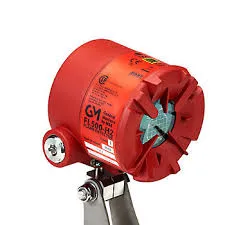
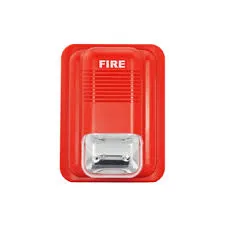

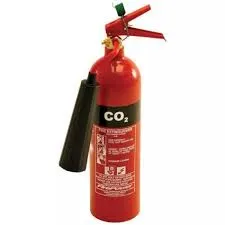

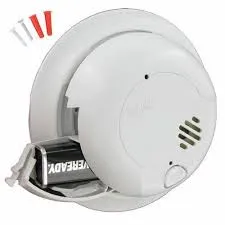


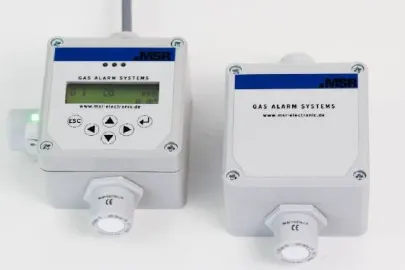


Reviews
Clear filtersThere are no reviews yet.